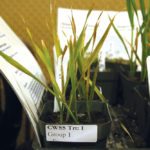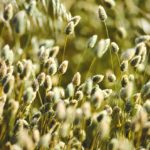
Mechanical harvest weed control
The Harrington Seed Destructor is a chem-free way to chew up weed seeds at harvest time

Getting to know your herbicides: Group 1
A look at how Group 1 chemicals work and what you can do to manage weed resistance

Clubroot can damage more than just the bottom line
Along with economic and agronomic problems, clubroot causes emotional damage

Reporter’s Notebook: When you meet a challenge, change
Whether you’re a farmer or a football player, adaptability is the key to success

Reporter’s Notebook: Getting women on board(s)
Whether and how to work to recruit women to ag boards has become a contested topic

Meet your farming neighbours: Tennille Wakefield
Every farm has a story. Here's Tennille Wakefield's story from Maidstone, Sask.

Get on board with these five tips
Much of rural life is governed by non-profit boards. Know how to give your best when it's your turn
Reporter’s Notebook: Moving from Twitter to real life
Twitter is bringing the ag community closer together, in many different ways

Brewing canary seed
Will Canary Seed Blonde set the stage for a new market for your canary seed?

Hops: the flavour in your beer
These hop growers share their stories on everything from insects to the hop harvest


